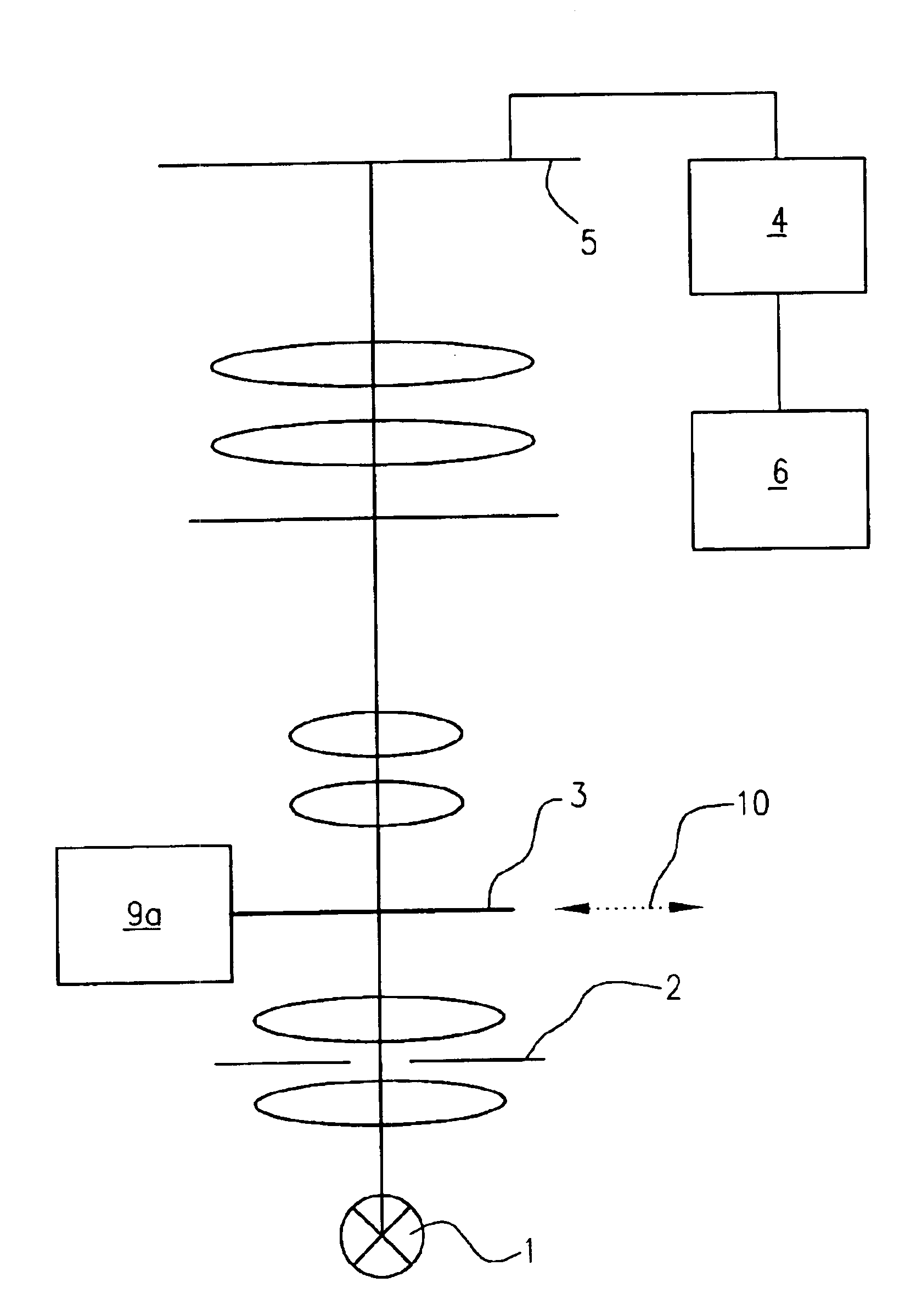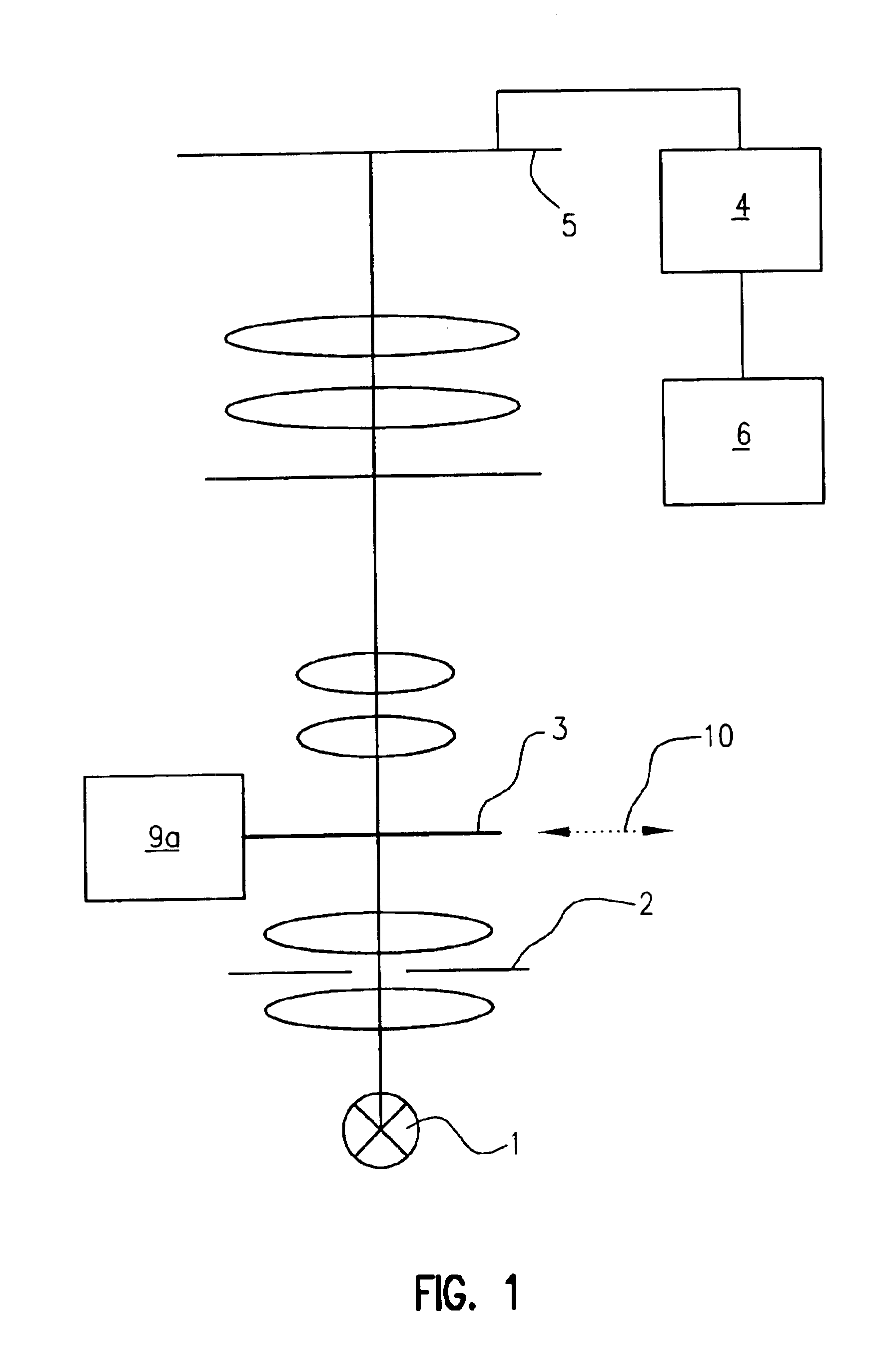Microscope having a contrast-increasing image a acquisition apparatus
a technology of contrast-increasing image and acquisition apparatus, which is applied in the field of microscopes, can solve the problems of time-consuming processes, impaired image quality, and inability to accurately detect the image, so as to reduce the overall recording time, the overall acquisition time is also correspondingly reduced, and the spacing is sufficient
- Summary
- Abstract
- Description
- Claims
- Application Information
AI Technical Summary
Benefits of technology
Problems solved by technology
Method used
Image
Examples
Embodiment Construction
[0021]FIG. 1 schematically depicts an arrangement according to the present invention in general and highly simplified form. The light of a light source 1 is incident via a stop 2 on specimen 3, and is imaged via further lens systems onto image sensor 5. The latter is connected to a memory unit 4, and that in turn to an evaluation unit 6. Specimen 3 can be moved in the plane of arrow (10). It should be appreciated that although arrow (10) only depicts one axis of movement, positioning unit (9a) is capable of scanning an area. i.e., scanning in two axes. Since the lens systems arranged between specimen 3 and image sensor 5 are known per se, they have been inserted into FIGS. 1 and 2 without reference characters and without more detailed explanation.
[0022]FIG. 2 shows an arrangement similar to that in FIG. 1, only stop 2 being moved in this case. This is again illustrated by arrow (11). As previously mentioned, it should be appreciated that although arrow (11) only depicts one axis of ...
PUM
 Login to View More
Login to View More Abstract
Description
Claims
Application Information
 Login to View More
Login to View More - R&D
- Intellectual Property
- Life Sciences
- Materials
- Tech Scout
- Unparalleled Data Quality
- Higher Quality Content
- 60% Fewer Hallucinations
Browse by: Latest US Patents, China's latest patents, Technical Efficacy Thesaurus, Application Domain, Technology Topic, Popular Technical Reports.
© 2025 PatSnap. All rights reserved.Legal|Privacy policy|Modern Slavery Act Transparency Statement|Sitemap|About US| Contact US: help@patsnap.com



